Lettuce is one of those plants that seems to bolt in a blink once hot weather arrives, and it can be especially frustrating if your tomatoes and cucumbers are just starting to ripen. Come on now, where’s the salad love?!
Bolting can happen for many reasons, and there are simple ways to delay bolting. But is it game over once your plants send up those flower stalks?
Not at all! Depending on where they’re at in the flowering stage, bolted lettuces are often still edible.
Why bitter doesn’t necessarily equal bad
Most people shy away from bolting lettuce because the leaves start to turn bitter as the plant concentrates its energy on producing seed. That bitterness (caused by an increase of bitter-tasting compounds called sesquiterpene lactones) is part of the plant’s natural defense mechanism against pests and microbial growth.
Did you know?
Sesquiterpene lactones have anti-inflammatory properties, anti-cancer potential, and many other medicinal benefits, according to numerous studies.
Bitterness isn’t an indicator of quality, however. While lettuce leaves will become chewier and decline in quality as they age—and trust me, you’ll know when that happens—they can continue to be be harvested for weeks after the flower stalk appears.
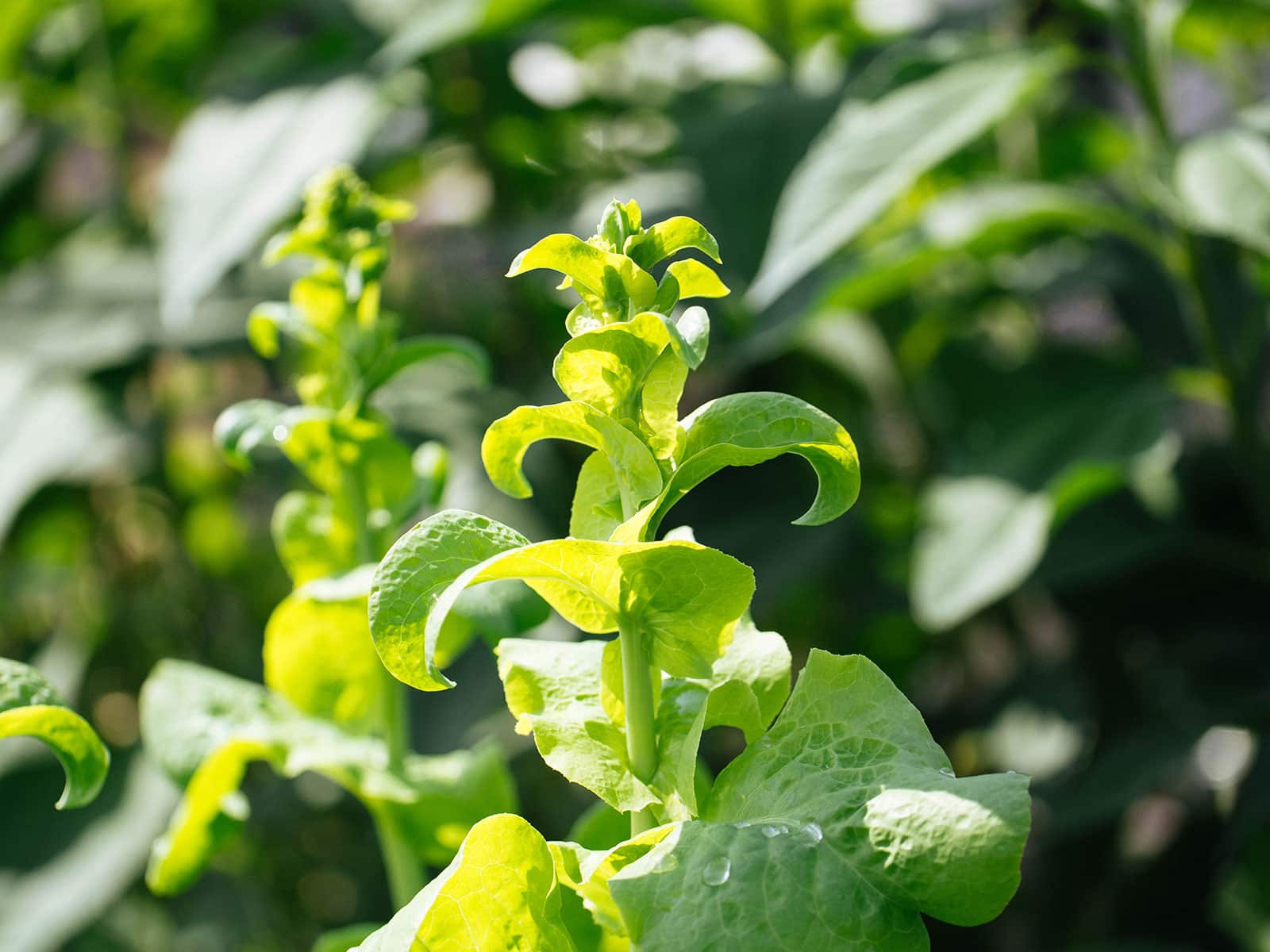
If you enjoy bitter greens like radicchio, endive, arugula, mustard, dandelion greens, and collard greens, bolted lettuce isn’t all that much different in flavor. It’s just as nutrient-packed and I’ll often mix it with other (sweeter) greens like baby lettuce, baby chard, or spinach to stretch the salad season.
Disclosure: If you shop from my article or make a purchase through one of my links, I may receive commissions on some of the products I recommend.
How to make bolted lettuce less bitter
If you find the flavor of bolting lettuce a bit too much but you’re open to new ways of eating it, here’s how I like to tame the bitterness and use up all that summer lettuce in the kitchen.
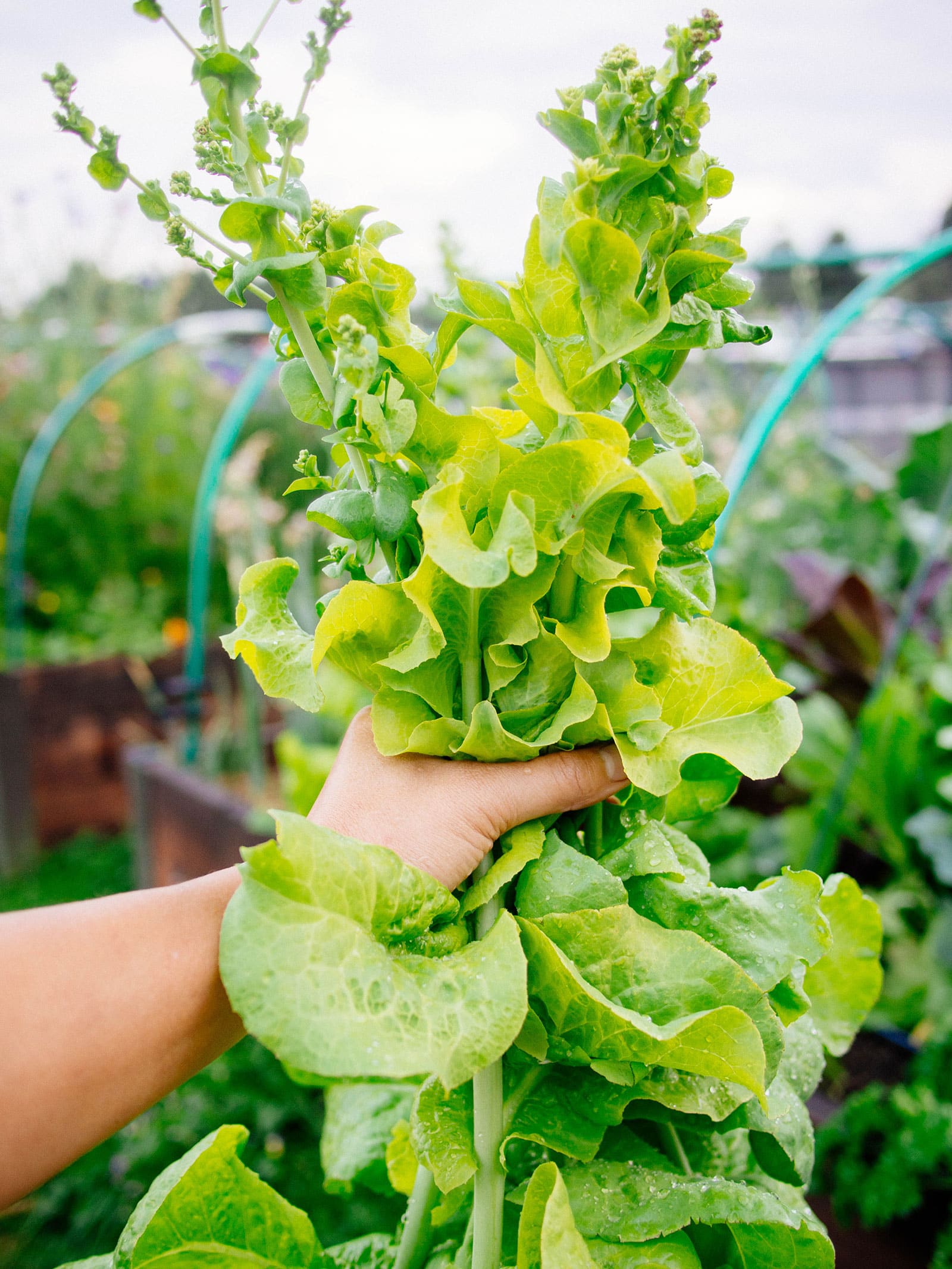
Use a robust vinaigrette
Acidity can make bitter greens taste a lot more pleasant. If you’re using bolted lettuce leaves in a salad, add a tangy vinaigrette to brighten things up. Citrus and other sweet-tart ingredients (like plums and pineapple chunks) also help tone down the bitterness. (Pro tip: Grill the fruit for a standout summer salad!)
Cook it
Wait, cooked lettuce? Yes, it’s a thing, and it’s actually very common in Asian cuisines. Lettuce can be stir-fried, sauteed, boiled, braised, or blanched like any other leafy green, and it cooks down considerably (so you can use up more of it).
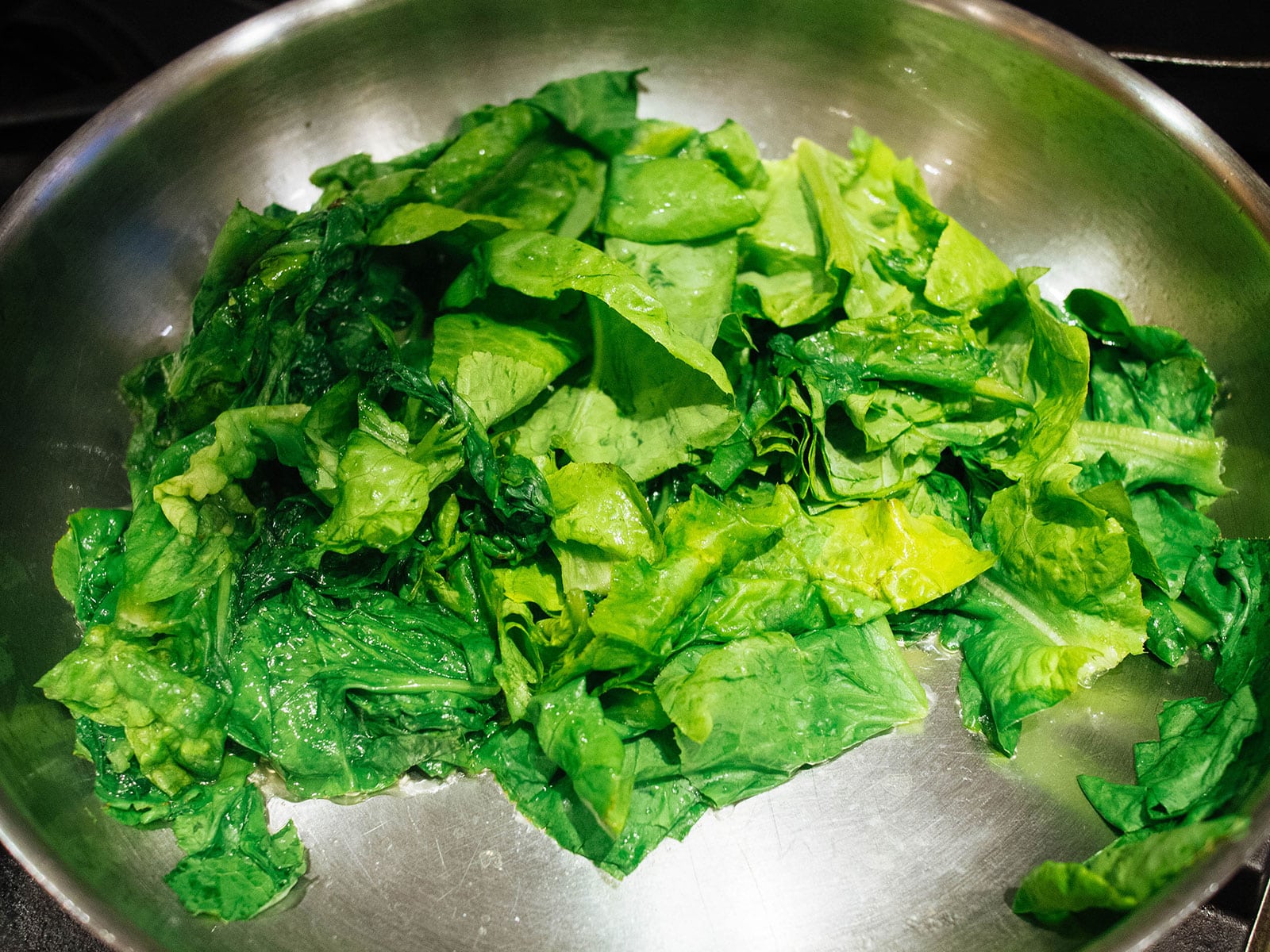
Heat mellows out the bitterness, and it doesn’t take much more than olive oil, garlic, salt and pepper, and a squeeze of lemon to turn heaps of lettuce into a delicious side dish. Or, try garlic, ginger, soy sauce, and toasted sesame oil for a more savory take.
Making soup? Lettuce wilts into a silky texture (similar to spinach) and can be used in place of cabbage in many soup recipes.
Add spice
The intensity of bitter lettuce is best matched with a bold spice. Chile peppers are strong enough to counteract any bitterness in the greens, and one of my favorite ways to use them is to add chili crisp (a Chinese-style hot sauce made with peppers and other aromatics infused in oil) to a pan of sauteed lettuce. It’s an easy weeknight dish—just add your choice of protein to round it out.
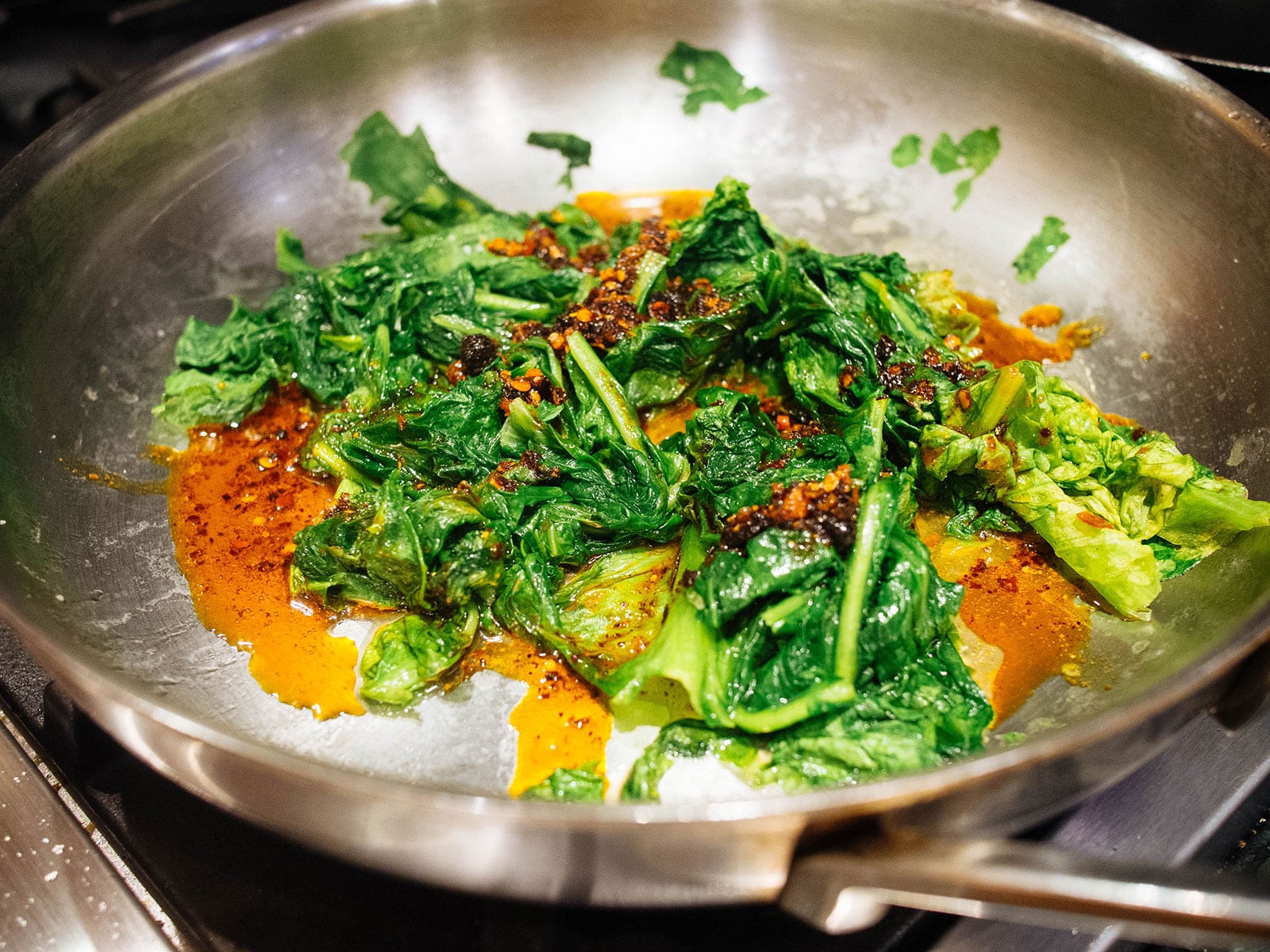
If I’m not making my own chili crisp at home, I swear by these two from the store: Sichuan Chili Crisp or Momofuku Chili Crunch. (Try them on all vegetables, not just lettuce!)


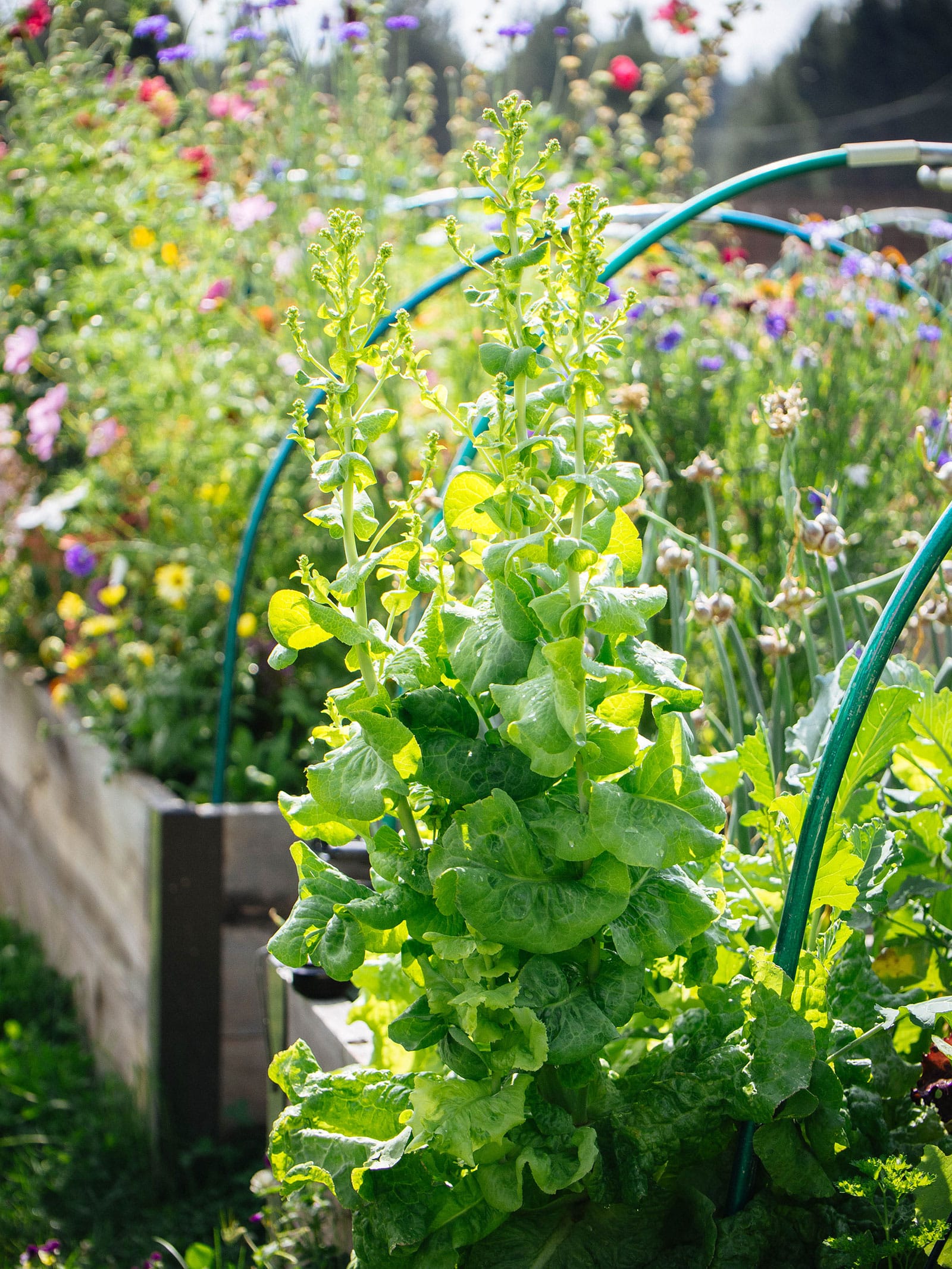
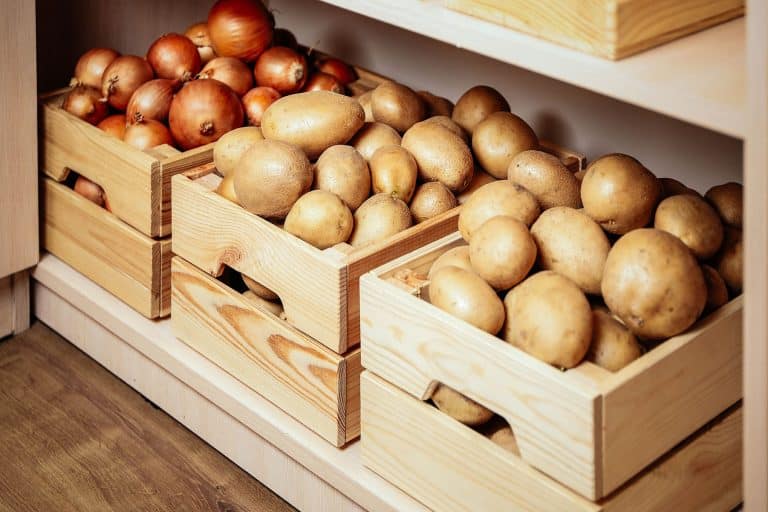





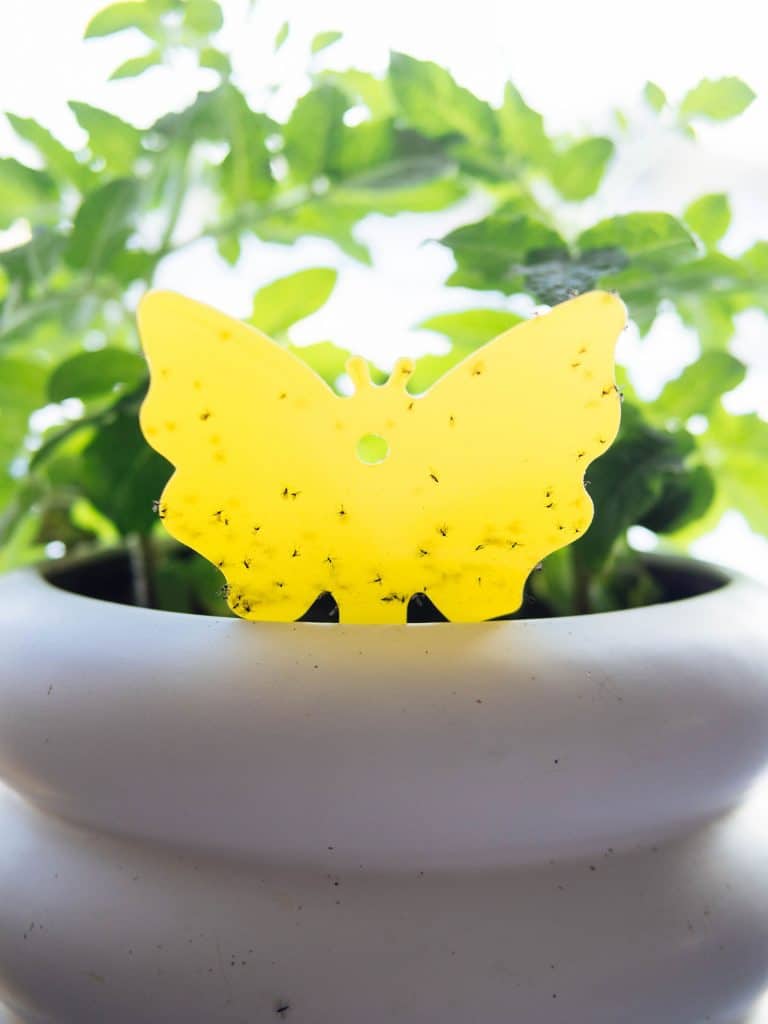
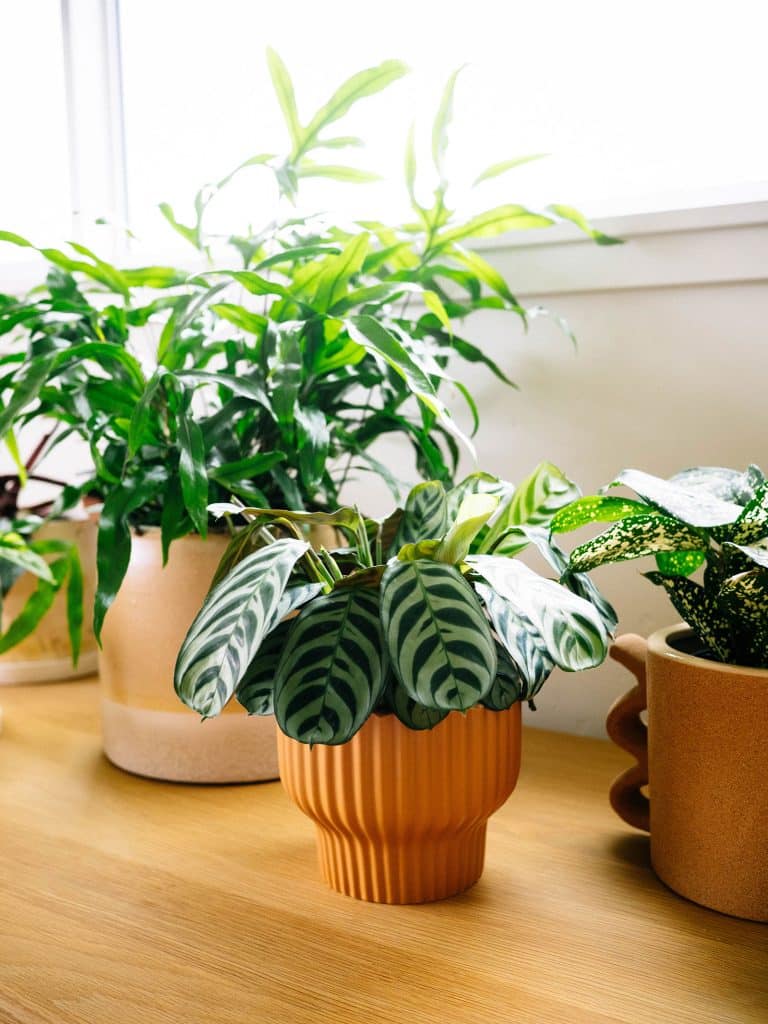
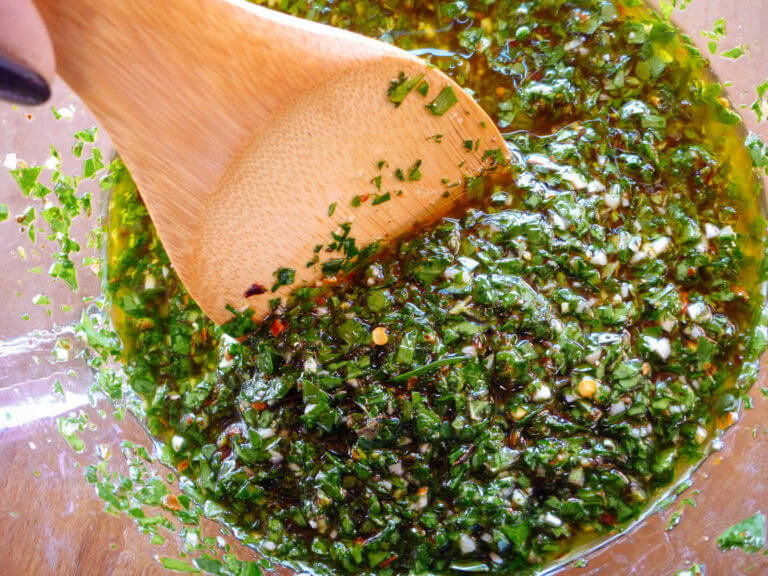
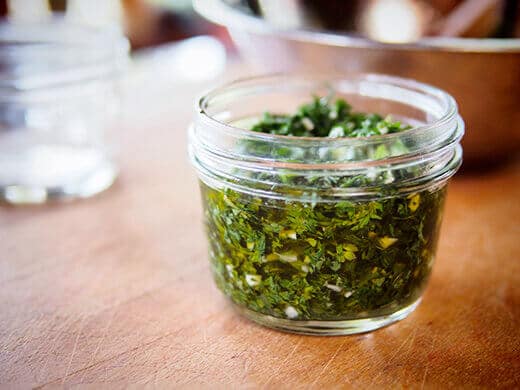
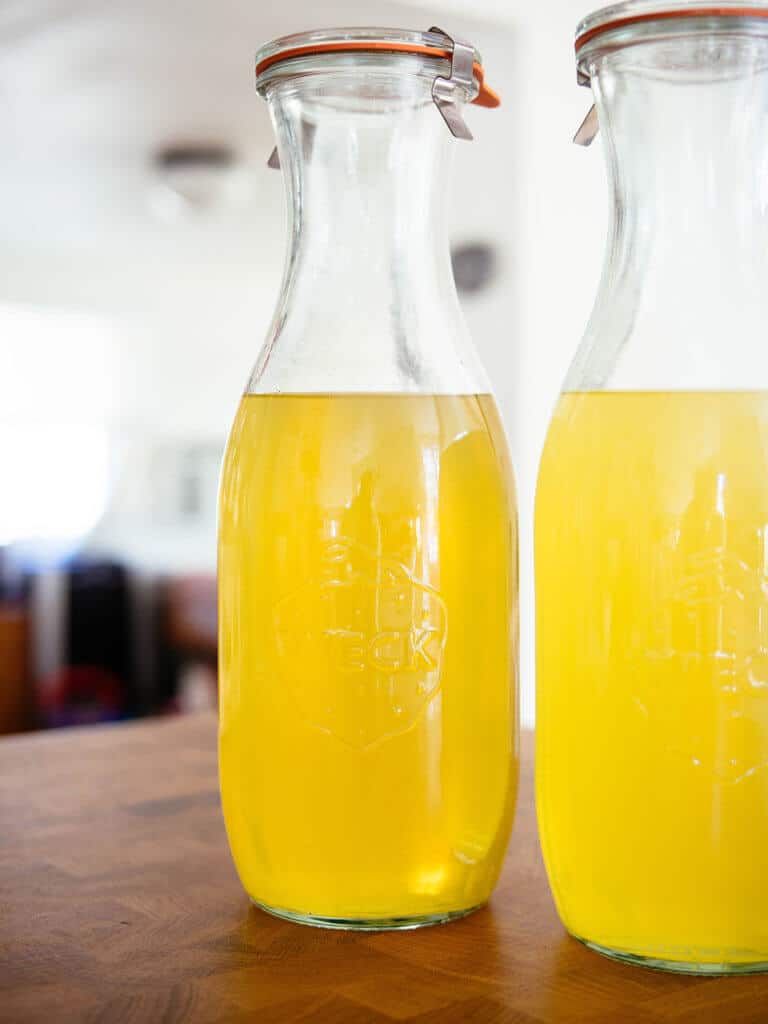
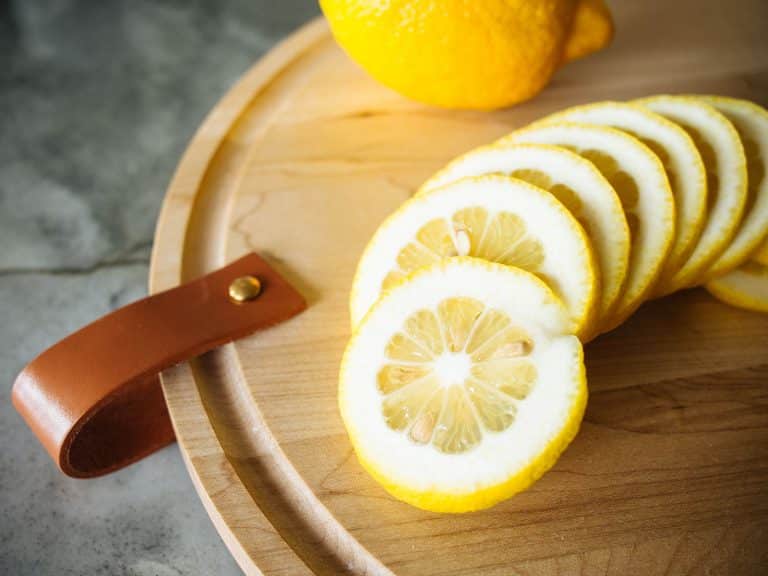

מאוד מרוצה מהתוכן
This post is so great! I’ve been sauteeing bolted lettuce for awhile now:-) And I didn’t know that this was a common culinary technique in Asian cooking. I like to be in good company:-)
I also find that using extra creamy salad dressing, like ranch or green goddess, tempers the bitterness. In fact, I made a bitter lettuce salad tonight with sweetness added via roasted red pepper, grated cucumber, sweet tomato slices, and a creamy buttermilk dressing.
Thank you Linda, love your blog and I always follow your advice!
Linda, I was glad to see cooked lettuce in part of your treatment on using bolted lettuce. It is our back-up green vegetable when our other (mostly Asian) greens have been eaten and we are just now planting more for fall harvest.
Have you ever eaten the flower stalk itself? I know that a variety called ‘Celtuce’ has been bred primarily for the stalk, so the concept has been explored. Cynthia eats leaves stripped from the stalk until they get too bitter. (Being toothless, I no longer eat salads.) The thing about cooked lettuce is that the leaves are insubstantial, so it takes a lot to make a ‘mess of greens’ as my French Canadian was wont to say.
When the lettuce gets too bitter, or, more often, when a lush succession stalk of lettuce is yielding abundantly, I cut up the stalks and leaves for mulch around unrelated plants. We get very little slug damage from the lettuce varieties we plant (mainly ‘Winter Density’ and one of the improved oak leaf varieties). I’m beginning to think central Vermont is the Slug Capital of the world.) This year I planted a salad/stirfry brassica called ‘Maruba Santoh’ [MS] or something like that (from Fedco). I can eat that in salads, and find it very tasty. It does not to well in our shallow planters, but thrives in 25 gal. pots. Given adequate space (for both roots and leaves) it gets quite large, and sustains repeated harvest of the outer leaves. My daughter plants MS densely and harvests by progressive thinning until the remaining plants have ample room. MS is exceedingly susceptible to slugs, who like it better than slug bait and beer traps.
[As I was typing this, Cynthia came in to talk about lunch and saute’d lettuce was nominated because we have more than we can eat of it and other greens for succession planting are only a few inches high. I transplant them from the flat to 4″ pots so, as other crops are harvested, I can plunk some into the opened space. Also, we have a few 25 gal. pots with sweet potatoes planted around the perimeter to hang down and keep the soil cooler for whatever I plant in the center. We may get a frost in a few days, so I will harvest the sweet potatoes soon. That will give me space for some of the plants in small pots. I usually ‘reinvigorate’ the soil with compost, stone meal, bone meal, etc. before replanting.
wow, love your systems: sweet potatoes in pots with leafy vines to provide some cooling shade, cooking the stalks and leaves of lettuce, succession planting greens. I guess you eat well in your household!